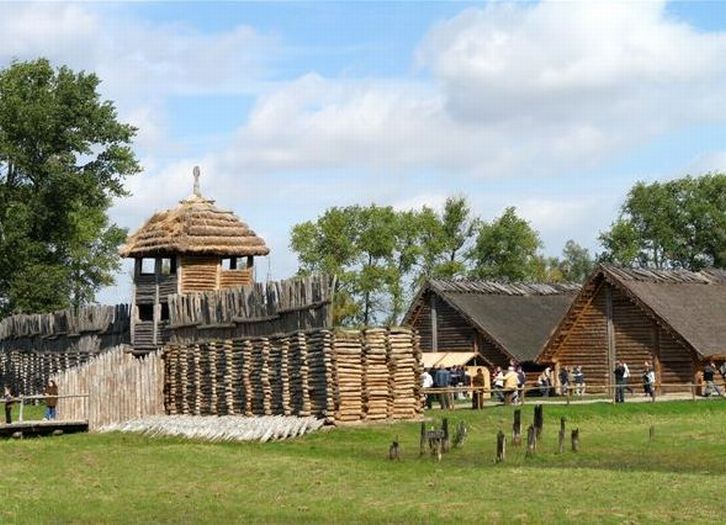In 1933, Walenty Szwajcer, a teacher at a rural school in Biskupin (Żnin County), started to take an interest in the objects his pupils were playing with after school. He learned that these had been found on a peninsula in Lake Biskupin. Well-preserved relics of a prehistoric settlement were uncovered while digging peat and deepening the Gąsawka river. The following year, Szwajcer approached Józef Kostrzewski, an eminent archaeologist and academic from Poznań University, who conducted a wide-ranging examination over this sensational discovery shortly afterwards. Much of the fortified settlement was uncovered over the following years as excavation continued until the outbreak of WWII. The colony was deemed to have belonged to the Iron Age Lusation culture. The settlement covered 2 ha and the interior of 13 rows of long wooden huts was surrounded by a bulwark, an embankment and a palisade. The entire village might have housed some 1,000 people.
The excavation of Biskupin was one of the most exciting archaeological finds of the interwar period and, at the same time, a propaganda weapon used to discredit the views of German researchers adamant that the area was part of the original German homeland. A hypothetical reconstruction of the embankment, entrance gate and parts of houses was accomplished as well and so the image of Biskupin soon burned itself into Polish consciousness, history and iconography.
Further research was conducted after WWII. The settlement was originally thought to date back to 700-400 B.C. Prof. J. Kostrzewski later adjusted this to 550-400 B.C. When the Gliwice Technical College subjected samples of the wood used to construct Biskupin to C14 Carbon Dating, the results sparked a sensation by backdating the settlement a full 200 years. A dendrochronological examination, which determines the age of timber from the number of growth rings, confirmed these results. These analyses, undertaken in Warsaw, Göttingen and Zürich, revealed that the timber used to build the settlement was cut between 747 B.C. and 722 B.C. Biskupin is therefore older than previously thought and was not part of the Lusation Culture.
Biskupin is now a unique open-air museum that shows how people lived many centuries ago. The site is used for annual archaeological festivals and provides filmmakers an interesting location. Biskupin has featured in the screen adaptations of Ogniem i mieczem (With Fire and Sword) and Stara baśń (An Ancient Tale).



